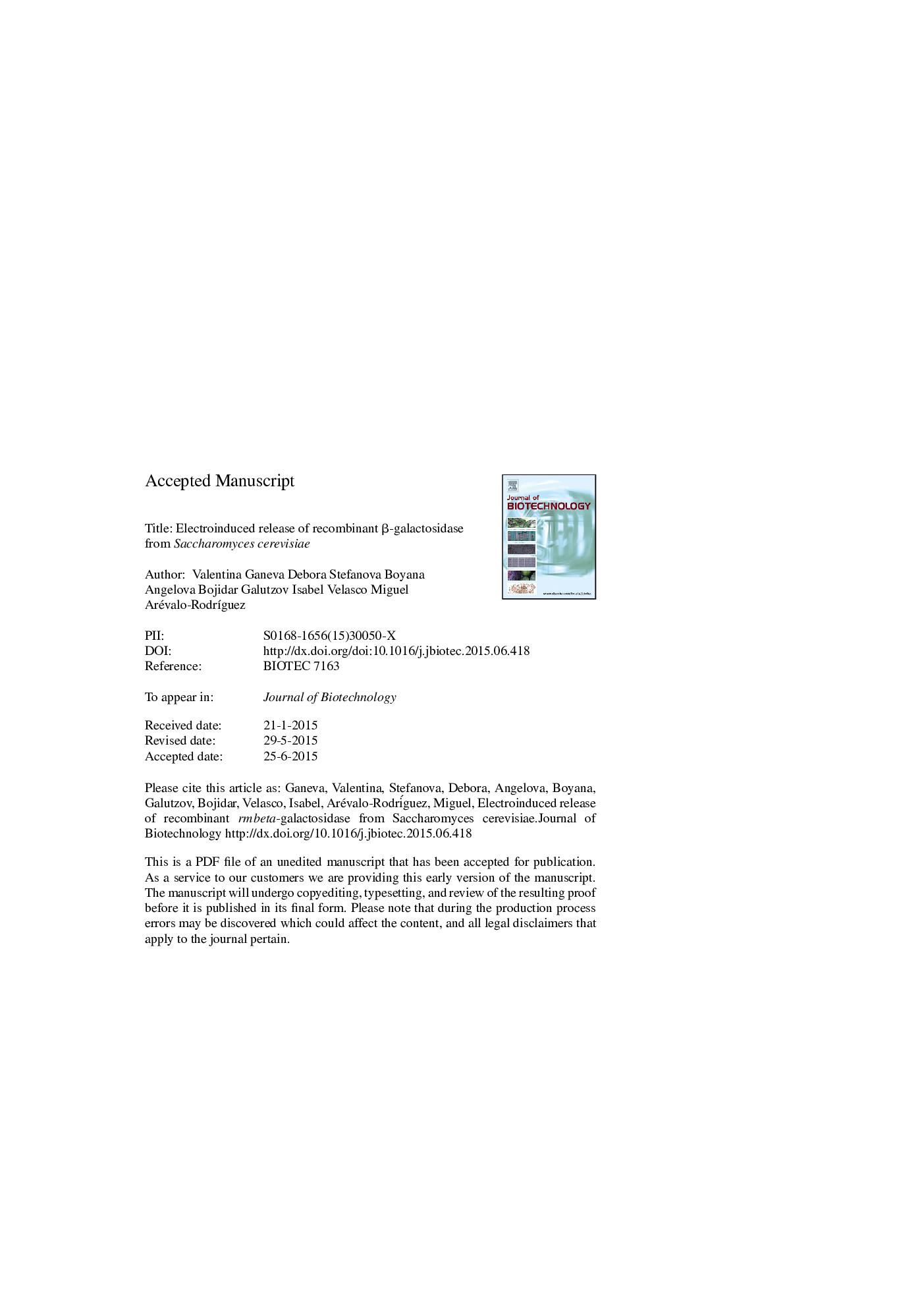| Article ID | Journal | Published Year | Pages | File Type |
|---|---|---|---|---|
| 6490952 | Journal of Biotechnology | 2015 | 30 Pages |
Abstract
Yeasts are one of the most commonly used systems for recombinant protein production. When the protein is intracelullarly expressed the first step comprises a cell lysis, achieved usually by a mechanical disintegration. This leads to non-selective liberation of the cytoplasmic content, which complicates the following downstream process. Here, we present a new approach suitable for more selective and efficient recovery of large intracellular proteins from yeast, based on the combination of electropermeabilisation and subsequent treatment with lytic enzyme. The experiments were performed with Saccharomyces cerevisiae strains expressing LYTAG-β-galactosidase from Escherichia coli. The permeabilzation of plasma membrane was induced by application of rectangular electric pulses, with 1.25 ms duration and field intensity of 4.3-5.4 kV/cm. In the presence of a reducing agent the cells released approximately 80% of the total protein 4 h after electrical treatment. At the same conditions the release of the recombinant protein was very slow, reaching 45% from total activity 20 h after pulse application. The great difference in the release kinetics enabled to remove a part of the total protein, without significant loss of β-galactosidase activity, only by substituting the incubation buffer. The subsequent addition of lyticase (1-2 U/ml) led to recovery of approximately 70% from the recombinant enzyme, with a factor of purification 2.6, without provoking a significant cell lysis. The applicability of similar protocol for liberation of large recombinant and native proteins from yeast is discussed.
Keywords
Related Topics
Physical Sciences and Engineering
Chemical Engineering
Bioengineering
Authors
Valentina Ganeva, Debora Stefanova, Boyana Angelova, Bojidar Galutzov, Isabel Velasco, Miguel Arévalo-RodrÃguez,
